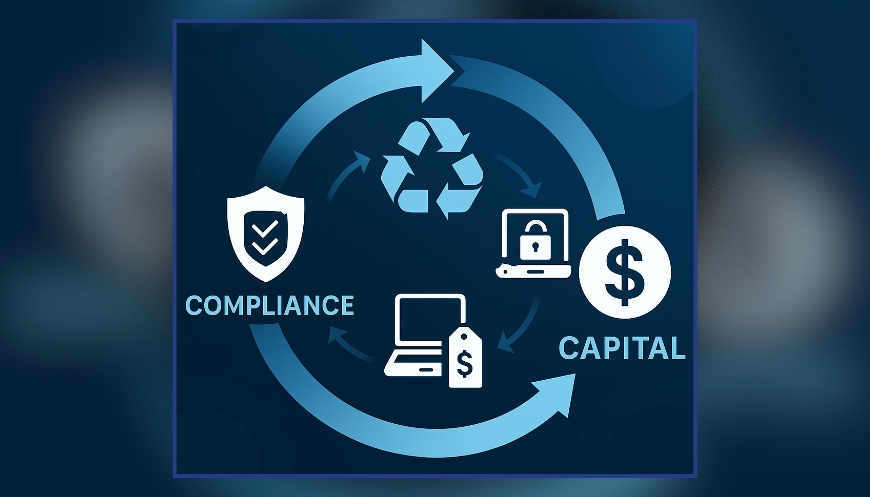In today’s tech-driven economy, end-of-life IT equipment often represents an overlooked opportunity. For too long, IT asset disposition (ITAD) has been viewed solely through the lens of risk mitigation and regulatory compliance. But forward-thinking organizations are recognizing something bigger: ITAD can be a strategic advantage that adds measurable business value.
By partnering with a provider like Dynamic Lifecycle Innovations, businesses can transform ITAD from a reactive process into a proactive tool for driving sustainability goals, recovering capital, and supporting digital transformation. Here’s how.
1. Shift the Mindset: ITAD as a Strategic Business Function
ITAD isn’t just a cleanup process at the end of an IT lifecycle—it’s a vital function that supports:
- Corporate governance and compliance
- Cybersecurity and data integrity
- Budget optimization and cost recovery
- Environmental and social responsibility
The first step toward unlocking ITAD’s potential is to move it out of the shadows and into your organization’s broader strategic planning process.
2. Capture Untapped Value Through Resale and Recovery
When decommissioned assets are assessed, sanitized, and resold properly, they generate returns that directly benefit your bottom line. Devices like laptops, servers, and networking equipment hold significant aftermarket value.
Dynamic’s value recovery services turn those depreciated assets into capital reinvestment. Even components like RAM, processors, and storage drives can be harvested and monetized, pushing the return even higher.
3. Proactively Manage Risk Through Certified Processes
Risk avoidance is still core to ITAD—but rather than viewing compliance as a cost center, use it to strengthen business continuity and build stakeholder confidence.
Dynamic’s NAID AAA, R2v3, and ISO certifications ensure your assets are handled, destroyed, and recycled according to the highest global standards. This safeguards sensitive data, mitigates legal exposure, and reassures customers, partners, and regulators.
4. Align ITAD With ESG and Brand Values
Stakeholders and investors are increasingly scrutinizing ESG performance. With a zero-landfill policy and transparent environmental reporting, Dynamic helps position your ITAD practices as a core part of your sustainability strategy.
Use ITAD data to report:
- Total e-waste diverted from landfills
- Carbon savings from reuse and recycling
- Social impact through responsible labor and recycling partnerships
This turns regulatory compliance into brand equity.
5. Improve Budgeting and Forecasting
When ITAD is integrated into procurement and decommissioning strategies, it creates predictable cost models and revenue streams. Dynamic helps clients:
- Develop budgeting plans for asset retirement
- Track asset value over time
- Incorporate disposal timelines into refresh cycles
With proper planning, ITAD becomes part of the capital lifecycle—not an unpredictable expense.
6. Leverage ITAD Data for Strategic Decision-Making
Advanced ITAD providers offer analytics and reporting that can feed back into your technology strategy. Use Dynamic’s data insights to:
- Understand asset lifecycle trends
- Identify underutilized hardware
- Optimize refresh strategies based on ROI
This elevates ITAD from a back-end process to a front-end contributor to strategic IT planning.
Conclusion: Make ITAD Work for Your Business
With the right partner and mindset, ITAD can do more than just meet compliance checkboxes. It can generate capital, elevate your ESG profile, and strengthen operational agility.
Dynamic Lifecycle Innovations empowers your organization to turn ITAD into a competitive advantage. From secure data destruction and value recovery to sustainability alignment and strategic reporting, we deliver solutions that help your end-of-life IT contribute to future growth.
Want to turn your ITAD process into a business driver? Contact Dynamic Lifecycle Innovations today and discover what your end-of-life assets are really worth.
